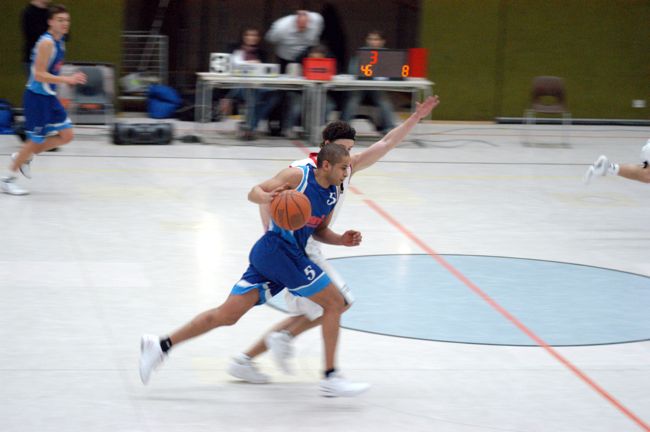
The month of March signified a couple of things—spring is on the horizon and the high school basketball season has gradually wound down to its end. Since mid-November, high school teams all over the United States have put in countless hours practicing and playing up to 35 games to attain the ultimate prize of winning a league, section, or even state title. Although only a few teams are able to achieve this, every player will have put in many hours of basketball once the season ends. That means a lot of jumping and shuffling, which can put a good amount of stress on the hip, knee, and ankle joints of a player, especially one who might still be developing physiologically. With that being said, it’s important for young athletes to have a sound understanding of what they can do to recover physically from the rigors of a long season and prepare themselves for the next season.
Here are some suggested things high school basketball players can do to ensure they’re maximizing their off-season time:
1. Rest, rest, and rest: If a basketball player isn’t participating in a spring sport, he should partake in one to two weeks of no activity or minimal activity. The body has gone through a whole season of working hard five or six days a week for a good three months. Give the body some time to “recharge the battery” and rest any aches and pains that might have occurred during the season. The mind also needs time to relax, not be consumed with basketball.
2. Skill development: Once an athlete has given himself time to rest, he should go back to participating in basketball. However, rather than playing, the player should focus on his skill development. Too many young athletes devote countless hours of playing pick up games but don’t commit time to developing their skills. It’s near impossible to become better at any basketball skill, especially shooting, if you don’t take the time to practice on your own. It takes countless repetitions done correctly to become proficient at any skill, and often times in a pick up game, these opportunities don’t present themselves enough for anyone to improve on their skills. Playing pick up games with teammates is important because it will keep you conditioned for basketball and develop team chemistry, but skill development during the off-season, especially early, should be the primary focus.
3. Strength training: Basketball players, along with any athlete, should use the off-season to become stronger. The off-season is where the volume of your workload in the weight room should be at its highest. Devoting three to four days a week of effective strength training will help players becoming stronger in both the saggital and frontal planes. An effective strength training program will also aid in improving conditioning, power, and speed—all elements needed to be an effective basketball player. In terms of the strength program itself, the main focus should be on the various forms of core lifts such as deadlifts, squats, rows, and pushes. This is to ensure total body development.
4. Hip/glute activation: Although this falls under strength training, it’s important enough of a topic to get its own heading. The game of basketball involves a substantial amount of lateral movement, which involves the hips and glutes. In my experience training young basketball players, many of them have poor activation of these two areas. Not only are the glutes and hips involved in lateral movements (i.e. shuffling), but they also aid in jumping. Improper activation and synchronization of these muscles can lead to inefficient movements, thus causing common knee injuries such as patella tendonitis. Therefore, any strength training program should include exercises (i.e. lateral band walks, unilateral exercises) that require activation of the glutes and hip muscles. This will help athletes become more explosive laterally and decrease the risk of injury.
5. Ankle/foot mobility: Although last on the list, this perhaps could be the most important thing a basketball player can work on during the off-season. The nature of basketball causes a lot of stress at the ankle and foot joints. Compound that with many players wearing ankle braces during the season and we have players with horrible ankle mobility. The combination of high top shoes and ankle braces inhibits the ability for our ankle to do what it’s intended to do, which is to move. Ankle dysfunction can lead to knee issues as well. Thus, it is important for all basketball players to work on their ankle mobility. A great way to work on ankle mobility is to do basic barefoot training. Some great exercises to do barefoot are balance touches in different planes, dynamic warm-up type movements, and light footwork drills. Putting the ankle through these various ranges of motion will help improve ankle proprioception and strengthen the intrinsic muscles of the foot.
The off-season is a time for basketball players to take care of their bodies and work on skill development. Playing pick ups are important but shouldn’t make up the bulk of an off-season regimen. Incorporating strength training, individual skill work, rest, and prehabilitation will help in the overall development of a young basketball player.









